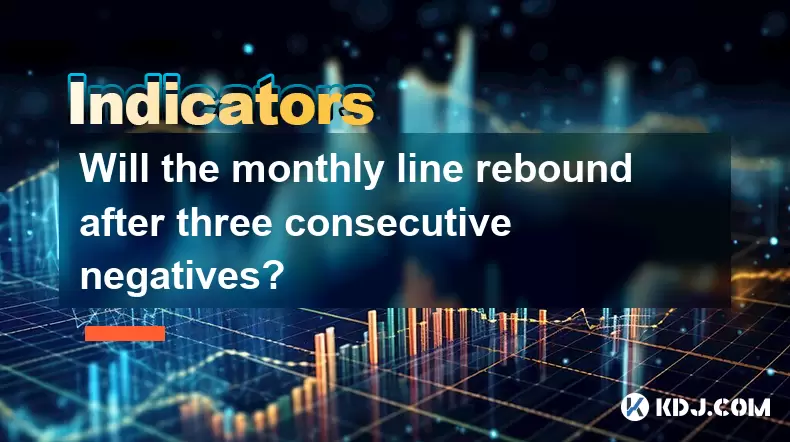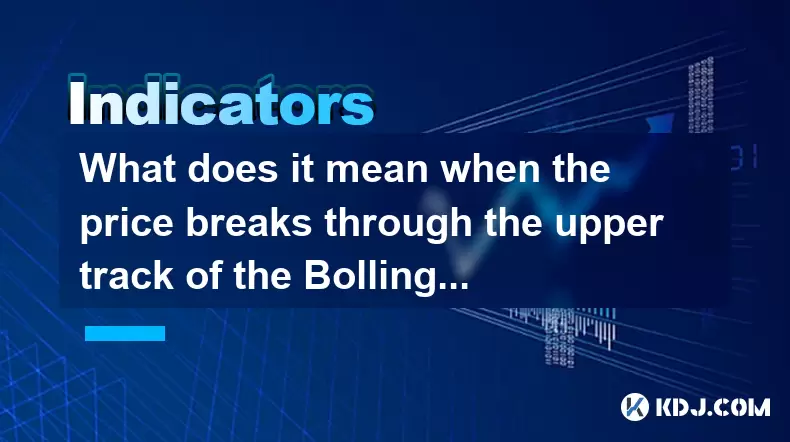-
 Bitcoin
Bitcoin $117500
-0.66% -
 Ethereum
Ethereum $3760
-1.24% -
 XRP
XRP $3.087
-2.54% -
 Tether USDt
Tether USDt $0.9999
-0.01% -
 BNB
BNB $803.6
-4.03% -
 Solana
Solana $180.3
-4.15% -
 USDC
USDC $0.9998
-0.01% -
 Dogecoin
Dogecoin $0.2218
-4.92% -
 TRON
TRON $0.3366
3.71% -
 Cardano
Cardano $0.7785
-3.73% -
 Hyperliquid
Hyperliquid $42.90
-4.75% -
 Sui
Sui $3.797
-7.45% -
 Stellar
Stellar $0.4165
-2.32% -
 Chainlink
Chainlink $17.65
-4.17% -
 Bitcoin Cash
Bitcoin Cash $561.0
-3.86% -
 Hedera
Hedera $0.2611
-4.54% -
 Avalanche
Avalanche $24.33
-7.02% -
 UNUS SED LEO
UNUS SED LEO $8.972
0.06% -
 Litecoin
Litecoin $107.6
-2.79% -
 Toncoin
Toncoin $3.254
-1.84% -
 Shiba Inu
Shiba Inu $0.00001306
-4.69% -
 Ethena USDe
Ethena USDe $1.001
0.00% -
 Uniswap
Uniswap $10.10
-4.83% -
 Polkadot
Polkadot $3.902
-4.63% -
 Monero
Monero $315.1
-2.57% -
 Dai
Dai $1.000
0.02% -
 Bitget Token
Bitget Token $4.499
-2.53% -
 Pepe
Pepe $0.00001145
-7.38% -
 Cronos
Cronos $0.1479
6.07% -
 Aave
Aave $281.3
-4.07%
Will the monthly line rebound after three consecutive negatives?
Three consecutive negative monthly candles signal strong bearish pressure, but historical trends show they often precede rebounds, especially if on-chain data reveals accumulation and selling volume declines.
Jul 29, 2025 at 09:00 pm

Understanding the Context of Three Consecutive Negative Monthly Candles
In the cryptocurrency market, price movements are often analyzed through candlestick patterns on various timeframes, with the monthly chart being one of the most significant for long-term trend evaluation. When a cryptocurrency asset records three consecutive negative monthly candles, it indicates sustained selling pressure over a three-month period. This pattern is particularly notable in assets like Bitcoin (BTC) or Ethereum (ETH), where monthly trends can influence investor sentiment for extended periods. A negative monthly candle means the closing price at the end of the month was lower than the opening price at the beginning of the month. After such a sequence, traders and investors naturally question whether a rebound is imminent.
The historical data across major cryptocurrencies shows that extended negative runs on the monthly chart are relatively rare. However, when they do occur, they often precede mean-reversion patterns or consolidation phases. The key factor determining whether a rebound occurs lies in the broader market structure, including macroeconomic conditions, on-chain metrics, and liquidity flows within exchanges.
Key Indicators That Signal a Potential Rebound
To assess whether a monthly line rebound is likely after three negative months, several technical and on-chain indicators should be monitored closely. These include:
- RSI (Relative Strength Index) on the monthly timeframe: If the RSI drops below 30, the asset may be considered oversold, increasing the probability of a reversal.
- Volume analysis: A decline in selling volume during the third negative month, followed by a spike in buying volume, suggests weakening bearish momentum.
- On-chain accumulation: Data from platforms like Glassnode or CryptoQuant can reveal whether large holders (whales) are accumulating coins, which often precedes a price recovery.
- Exchange netflow: A net outflow of coins from exchanges to self-custody wallets indicates reduced selling pressure and increased confidence among holders.
For instance, if Bitcoin shows a sharp drop in exchange reserves combined with rising wallet-to-wallet transfers, it may signal that holders are taking control of their assets rather than preparing to sell. This kind of behavior often aligns with the early stages of a market bottom.
Historical Precedents in Cryptocurrency Markets
Looking back at Bitcoin’s price history, there have been multiple instances where three consecutive red monthly candles were followed by strong rebounds. One notable example occurred in 2018–2019, during the post-halving bear market. After three straight negative months in late 2018, Bitcoin stabilized and began a gradual recovery that culminated in the 2019 bull run. Similarly, in 2022, after a prolonged downturn following the Terra collapse and FTX bankruptcy, Bitcoin recorded three negative monthly closes. The subsequent months saw volatility contraction and accumulation before a partial recovery in 2023.
These patterns suggest that while three negative months reflect strong bearish sentiment, they do not necessarily indicate a continued downtrend. Instead, they may represent exhaustion of selling pressure, especially if the drops occur on diminishing volume. The halving cycle also plays a crucial role; historically, the 12–18 months following a halving event tend to see price recovery, even after severe drawdowns.
How to Monitor for a Reversal Setup
Traders seeking to identify a potential monthly candle reversal should follow a structured monitoring process. This involves both technical chart analysis and real-time data tracking:
- Watch for bullish engulfing patterns on the monthly chart. A single green candle that opens below the previous close but closes above the previous open can signal a shift in momentum.
- Monitor the 200-month moving average (MA). If the price is near or below this level, a bounce is statistically more likely, as this MA often acts as long-term support.
- Use logarithmic charts to assess whether the current price is approaching historical support zones. For example, Bitcoin’s $20,000–$25,000 range has repeatedly acted as a floor.
- Track funding rates and open interest on futures markets. Extremely negative funding rates indicate oversold conditions in derivatives, which can precede short squeezes and rallies.
- Observe stablecoin supply ratios (SSR). A declining SSR (total cryptocurrency market cap divided by stablecoin supply) suggests capital is moving out of stablecoins and into risk assets, a bullish sign.
These steps require consistent data tracking and the use of platforms like TradingView, CoinGecko, or Bybit’s market analytics to stay updated.
Practical Steps to Position for a Potential Rebound
If the conditions suggest a rebound may be forming, investors can take measured steps to position themselves. These actions should prioritize risk management and avoid overexposure:
- Dollar-cost averaging (DCA) into the asset over several weeks can reduce the risk of mistiming the bottom. For example, allocating a fixed amount weekly into BTC or ETH regardless of price helps average entry costs.
- Set conditional orders on exchanges. A buy limit order placed slightly above a key support level (e.g., 5% above the lowest monthly close) can automate entry if momentum shifts.
- Use stop-loss orders to protect capital. Placing a stop-loss below the recent monthly low helps limit downside if the downtrend resumes.
- Diversify across layers. Instead of only buying spot assets, consider staking or liquidity provision in DeFi protocols that offer yield, provided the platform is audited and secure.
- Avoid leverage during uncertain reversals. High leverage can amplify losses if the rebound fails and the market continues downward.
These strategies are designed to align with the uncertainty inherent in market bottoms while allowing participation in potential upside.
Frequently Asked Questions
Does a three-month losing streak always lead to a rebound?
No, a losing streak does not guarantee a rebound. While historical patterns show increased rebound probability after three negative months, external factors like regulatory crackdowns or macroeconomic shocks can prolong bear markets. Each cycle must be evaluated independently.
How can I verify if accumulation is happening on-chain?
Use platforms like Glassnode to view metrics such as "Exchange Netflow" and "Long-Term Holder Supply." A consistent net outflow from exchanges and rising supply in non-exchange wallets indicate accumulation.
What time of month should I check for monthly candle formation?
Monthly candles close at 00:00 UTC on the first day of the following month. For example, the July 2024 candle closes on August 1, 2024. Monitor price action in the final week of the month for potential reversal signals.
Can altcoins rebound before Bitcoin?
Altcoins typically follow Bitcoin’s trend. While some may show early strength, a sustainable altcoin rally usually requires Bitcoin to stabilize first. Watch the BTC dominance chart—a decline after a prolonged rise can signal altcoin season onset.
Disclaimer:info@kdj.com
The information provided is not trading advice. kdj.com does not assume any responsibility for any investments made based on the information provided in this article. Cryptocurrencies are highly volatile and it is highly recommended that you invest with caution after thorough research!
If you believe that the content used on this website infringes your copyright, please contact us immediately (info@kdj.com) and we will delete it promptly.
- Bitcoin Price Drop: Navigating the Dip with Corporate Strategies
- 2025-07-30 07:30:12
- BNB's Bullish Cycle: ChatGPT Weighs In on the Future
- 2025-07-30 06:50:12
- XRP's Wild Ride: Open Interest, Price Crash Fears, and What's Next
- 2025-07-30 07:50:12
- SEC Greenlights In-Kind Creations: A Game Changer for Bitcoin ETPs?
- 2025-07-30 07:50:12
- Arbitrum (ARB) Price Prediction: Navigating the Ups and Downs of the Best ETH Eco
- 2025-07-30 06:50:12
- Ethereum, Ruvi AI, Presale: The Next Big Thing in Crypto?
- 2025-07-30 07:30:12
Related knowledge

What does it mean when the EMA combination crosses upward for the first time after sideways trading?
Jul 28,2025 at 03:43pm
Understanding the EMA and Its Role in Technical AnalysisThe Exponential Moving Average (EMA) is a widely used technical indicator in cryptocurrency tr...

What does it mean when the price breaks through the upper track of the Bollinger Band but the RSI is overbought?
Jul 30,2025 at 03:35am
Understanding Bollinger Bands and Their Upper TrackBollinger Bands are a widely used technical analysis tool developed by John Bollinger. They consist...

What signal does the ROC send when it rises rapidly from a low level and breaks through the zero axis?
Jul 27,2025 at 10:15am
Understanding the Rate of Change (ROC) IndicatorThe Rate of Change (ROC) is a momentum-based oscillator used in technical analysis to measure the perc...

What does it mean when the moving averages are glued together and a gap appears?
Jul 29,2025 at 07:49pm
Understanding Moving Averages in Cryptocurrency TradingMoving averages are among the most widely used technical indicators in the cryptocurrency tradi...

What does it mean when TEMA breaks through the long-term downward trend line?
Jul 29,2025 at 02:50pm
Understanding the Role of Smart Contracts in Decentralized Finance (DeFi)Smart contracts are self-executing agreements with the terms of the agreement...

What does it mean when the price breaks through the double bottom neckline and the moving averages are arranged in a bullish pattern?
Jul 28,2025 at 10:57am
Understanding the Double Bottom PatternThe double bottom is a widely recognized reversal chart pattern in technical analysis, particularly within the ...

What does it mean when the EMA combination crosses upward for the first time after sideways trading?
Jul 28,2025 at 03:43pm
Understanding the EMA and Its Role in Technical AnalysisThe Exponential Moving Average (EMA) is a widely used technical indicator in cryptocurrency tr...

What does it mean when the price breaks through the upper track of the Bollinger Band but the RSI is overbought?
Jul 30,2025 at 03:35am
Understanding Bollinger Bands and Their Upper TrackBollinger Bands are a widely used technical analysis tool developed by John Bollinger. They consist...

What signal does the ROC send when it rises rapidly from a low level and breaks through the zero axis?
Jul 27,2025 at 10:15am
Understanding the Rate of Change (ROC) IndicatorThe Rate of Change (ROC) is a momentum-based oscillator used in technical analysis to measure the perc...

What does it mean when the moving averages are glued together and a gap appears?
Jul 29,2025 at 07:49pm
Understanding Moving Averages in Cryptocurrency TradingMoving averages are among the most widely used technical indicators in the cryptocurrency tradi...

What does it mean when TEMA breaks through the long-term downward trend line?
Jul 29,2025 at 02:50pm
Understanding the Role of Smart Contracts in Decentralized Finance (DeFi)Smart contracts are self-executing agreements with the terms of the agreement...

What does it mean when the price breaks through the double bottom neckline and the moving averages are arranged in a bullish pattern?
Jul 28,2025 at 10:57am
Understanding the Double Bottom PatternThe double bottom is a widely recognized reversal chart pattern in technical analysis, particularly within the ...
See all articles

























































































